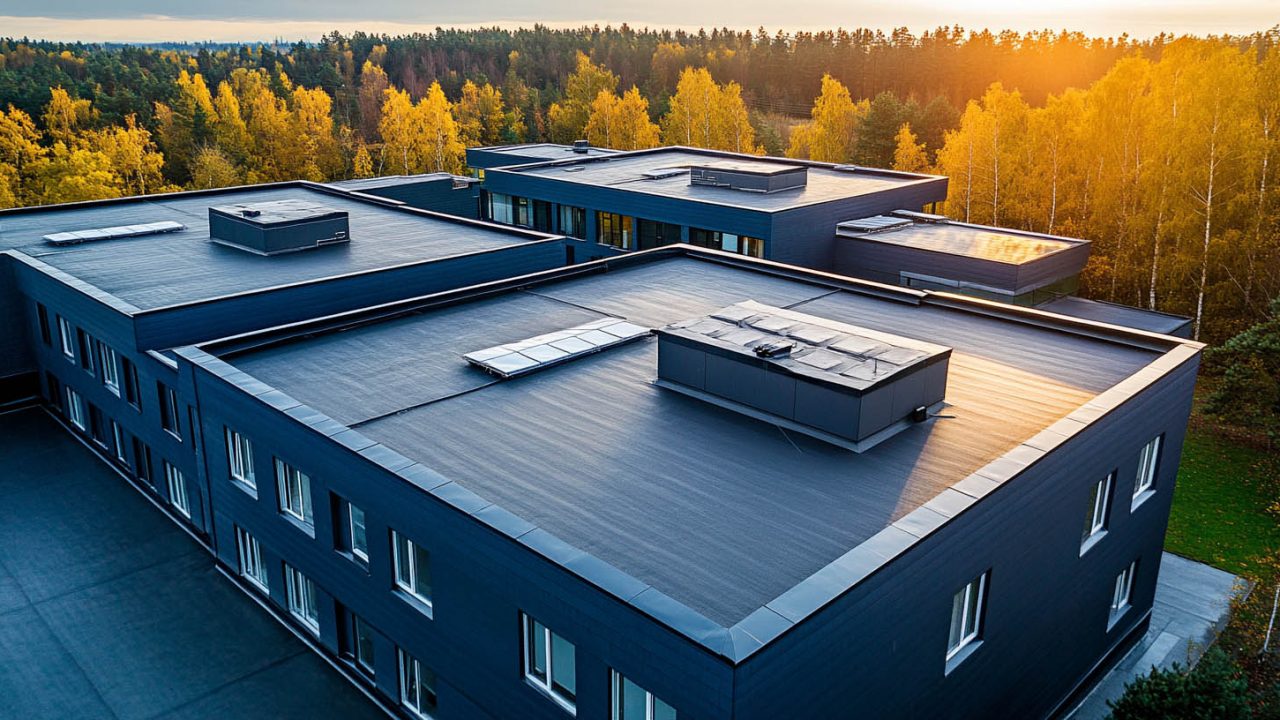Silicone coatings may not adhere properly to certain roofing materials or substrates, requiring additional preparation or primer coats, which can increase costs. United Contracting & Roofing LLC in Greenville, SC, offers expert guidance on choosing between TPO and metal roofing systems, tailored to meet your specific needs.
Key Differences Between TPO and Metal Roofing
Durability
Metal Roofing: Metal roofs are renowned for their exceptional durability and longevity, often lasting between 40 to 70 years with proper maintenance. Composed of materials like steel, aluminum, or copper, metal roofs can withstand harsh weather conditions, including heavy rain, snow, and high winds, making them ideal for buildings in diverse climates.
- Longevity: Up to 70 years.
- Weather Resistance: Excellent resistance to severe weather.
- Material Options: Steel, aluminum, copper.
TPO Roofing: TPO (Thermoplastic Polyolefin) roofs are single-ply membrane systems crafted from a mix of polypropylene and ethylene-propylene rubber. These roofing systems are both lightweight and durable, providing strong resistance to UV rays, ozone, and chemical exposure. With a typical lifespan of 20 to 30 years, TPO roofs are a dependable option for medium-term roofing needs.
- Lifespan: 20 to 30 years.
- UV and Chemical Resistance: High resistance to UV rays and chemicals.
- Lightweight: Easy to handle and install.
Energy Efficiency
Metal Roofing: Metal roofs are highly energy-efficient due to their reflective properties. They reflect a significant amount of solar heat, helping to keep buildings cooler during hot summers. Metal roofs can also be coated with reflective coatings to enhance their energy-saving capabilities.
- Solar Reflection: High reflectivity reduces heat absorption.
- Energy Savings: Lower cooling costs.
- Environmental Impact: Reduced carbon footprint.
TPO Roofing: TPO roofs are designed with energy efficiency in mind. Their white or light-colored surface reflects sunlight, reducing heat absorption and maintaining cooler indoor temperatures, leading to noticeable savings on air conditioning costs, particularly in warm climates.
- Reflective Surface: Reflects sunlight to reduce heat absorption.
- Cooling Efficiency: Lower indoor temperatures.
- Cost Savings: Reduced air conditioning expenses.
Installation and Maintenance
Metal Roofing: Installing metal roofs requires specialized skills and expertise due to their complex design. Proper installation is crucial to avoid leaks and ensure the roof’s longevity. Although metal roofs are relatively low-maintenance, regular inspections and minor repairs are essential to prevent potential issues.
- Complex Installation: Requires experienced professionals.
- Maintenance: Low, but regular inspections needed.
- Longevity Assurance: Proper installation ensures durability.
TPO Roofing: TPO roofs are relatively easier and faster to install, making them a cost-effective choice for many businesses. However, hiring an experienced roofer is essential to ensure proper installation and avoid premature failures. TPO roofs generally require minimal maintenance, making them a convenient option for busy business owners.
- Easy Installation: Faster and simpler to install.
- Maintenance: Minimal maintenance required.
- Cost-Effective: Lower installation costs.
Environmental Impact
Metal Roofing: Metal roofing is highly sustainable and eco-friendly. Most metal used in roofing is recycled, and at the end of its life cycle, the roof itself is recyclable. Metal roofs contribute to reducing landfill waste and have a lower environmental impact compared to traditional roofing materials.
- Sustainability: High recycled content and recyclability.
- Waste Reduction: Minimal contribution to landfill waste.
- Eco-Friendly: Lower environmental impact.
TPO Roofing: TPO roofs are considered environmentally friendly due to their energy-efficient properties and reflective surface. Additionally, they are free from harmful chemicals like chlorofluorocarbons (CFCs) and halogens, making them a safer choice for the environment.
- Chemical-Free: No harmful CFCs or halogens.
- Energy Efficiency: Reflective surface reduces energy consumption.
- Environmental Safety: Safer for the environment.
Cost Considerations
Metal Roofing: While metal roofs provide long-term cost advantages due to their durability and energy efficiency, their initial installation costs can be higher than some other roofing materials. However, their extended lifespan and low maintenance needs can offset the initial investment over time.
- Initial Investment: Higher upfront cost.
- Long-Term Savings: Low maintenance and extended lifespan.
- Energy Efficiency: Reduces energy bills.
TPO Roofing: TPO roofs are relatively budget-friendly compared to metal roofs, making them an attractive option for businesses looking for cost-effective roofing solutions. Their moderate installation costs and energy-saving potential can lead to reasonable savings over the roof’s lifespan.
- Budget-Friendly: Lower initial cost.
- Energy Savings: Reflective properties reduce cooling costs.
- Cost-Effective: Moderate installation expenses.
Conclusion
Selecting the right roofing system for your commercial building requires careful consideration of various factors, including durability, energy efficiency, installation, maintenance, environmental impact, and cost. United Contracting & Roofing LLC can help you make an informed decision tailored to your specific needs. For more information on the commercial roof spring cleaning checklist, click here.








